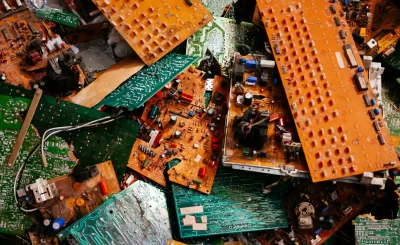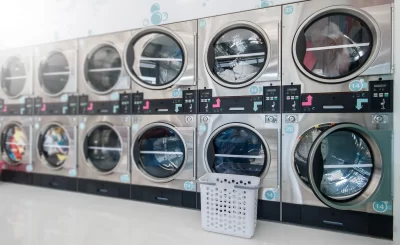In restaurant service, a kitchen’s operational flow can make or break a business. With an influx of orders, varied preferences, and the constant pressure to deliver on time, efficiency in the back-of-house operation remains a gold standard and a critical imperative.
As a restaurant owner who has experienced this firsthand, I couldn’t help but wonder if the introduction of food ordering systems truly revolutionised kitchen operations.
The Challenges
Let’s address the complexity a restaurant’s kitchen faces day in and day out. The cacophony of order mechanisms, ranging from printed chits to the boisterous wall of a smorgasbord of orders, is well-known to anyone who’s ever worked in a busy kitchen.
Each dish has a unique preparation time, and in the chaos, it’s easy to lose track, leading to delays in delivering a dining experience that’s both timely and delicious.
Even with dedicated staff and the best intentions, human error is inevitable. Misheard orders, miscommunicated changes, and misunderstanding a chef’s shorthand can lead to incorrect dishes being served, resulting in waste, customer dissatisfaction, and operational inefficiencies that accumulate over time.
Benefits of a Food Ordering System
The integration of a food ordering system is a promise of relief from these challenges. This digital solution is marketed to streamline the kitchen’s flow, enhance order accuracy, and ultimately improve customer satisfaction.
. Streamlining Order Management
Theoretically, a digital food ordering system flags orders directly to the kitchen with a clear breakdown of each item, reducing the need for manual transcription and interpretation. This real-time approach should minimize both the lag time in orders hitting the kitchen and the confusion over which order was placed first.
● Improved Accuracy and Efficiency
The direct order-to-kitchen transmission negates several touchpoints for errors, theoretically leading to higher-order precision. Timers and alerts for order completion can assist kitchen staff in prioritising and delivering each dish at its prime.
● Enhanced Customer Experience
Order tracking systems allow for updates on the progress of a customer’s meal, reducing the angst associated with waiting for food. Moreover, when orders are correct and served promptly, customer satisfaction and the likelihood of return visits trend upwards.
● Data-driven Insights
One of the lesser-discussed benefits comes from the data aggregation capabilities of these systems. They provide detailed analytics on popular dishes, peak ordering times, and trends in customer preferences, which can inform menu optimization and resource allocation.
Potential Drawbacks
For all its vaunted benefits, the implementation of a food ordering system is not without its teething problems. Let’s examine some of the reservations that linger.
● Initial Setup and Training
Adopting a new system requires a significant investment of time and resources into training staff and configuring the software to a restaurant’s unique menu and processes. This initial hurdle can be substantial, particularly for smaller establishments.
● Technical Difficulties and Downtime
The spectre of technical malfunctions looms large. System crashes or internet outages can bring an entire kitchen to a standstill, translating to lost revenue and aggrieved customers.
● Cost Considerations
The upfront costs of hardware, software, and ongoing service fees might not be feasible for some businesses. Restaurants must weigh the long-term savings against the immediate financial outlay and determine the return on investment that fits their scale.
● Adaptation Challenges
Human resistance to change is a well-documented hurdle in any industry, and the food ordering system is no exception. Employees may initially struggle to adapt, and there’s a learning curve that can impact productivity before it yields benefits.
Personal Experience and Insights
In my experience, despite the minor hiccups of implementation and the occasional outages (which were swiftly mitigated by providers), the food ordering syste did what it promised. It provided clarity, precision, and a more visible order management process.
The team gradually appreciated the control it gave them over the kitchen’s chaotic ebb and flow, and I noticed a tangible improvement in both service speed and accuracy.
Counterarguments and Rebuttals
Addressing common scepticism, some may argue that these systems remove the human element from food preparation, which is the bedrock of hospitality. However, I assert that these systems should be viewed not as replacements for human judgment but as tools that allow the human element to shine more brightly.
It’s also been posited that food ordering systems favour large chains with their considerable resources. While it’s true that the cost of entry can be daunting, it’s not a blanket inaccessibility. Providers recognise the diverse landscape and offer solutions that can scale up or down to suit the needs and means of different restaurants.
Conclusion
The question of whether a food ordering system truly simplifies a restaurant’s kitchen operation might seem rhetorical given our technology-driven era. And yet, as with any innovation, the answer isn’t one-size-fits-all. For many, these systems stand as an indispensable ally in the relentless quest for kitchen efficiency. For others, they may not yet be worth the trouble.
The key takeaway is not the ubiquity of these systems but the fluid, subjective nature of the restaurant business and the careful, conscious thinking each venture demands. Business owners must critically assess their unique operational challenges and strategic goals to determine if a food ordering system aligns with their vision of the perfect kitchen.
As for my stance, I remain on the side of a technology-inclined efficiency boost, tempered with the understanding that no system is perfect and the human touch is eternally invaluable. After all, in the kitchen, as in life, simplicity is often the product of nuance and balance.








